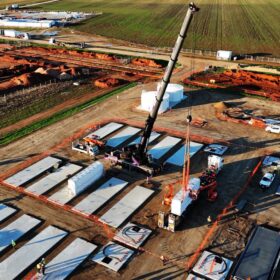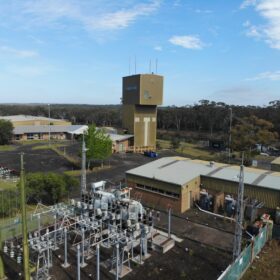Located in the Mackenzie Basin, the proposed 220 MW solar farm will occupy a carefully selected 320-hectare parcel of land within Haldon Station’s expansive 22,000-hectare property. This project brings to life previously unused arid land with excellent solar resource – and will add significant volume to Lodestone’s expanding portfolio.
Of Lodestone’s 10 consented sites, this project will be the first that it has lodged through the Fast Track Consent process, and it will become the first solar energy project to reach this milestone.
This milestone follows over a year of intensive studies and consultation. Lodestone Managing Director Gary Holden sees this as a significant step for a project with real strategic value, accelerating New Zealand’s renewable energy development.
“We are thankful the government has recognised that this project had the fundamentals to qualify under their stringent criteria. Our industry as a whole is dedicated to bringing new sources of electricity generation to the market, and the Fast Track process is a real boost to making this happen.”
“Expediting a well-considered, low-impact project like Haldon – with exceptional solar potential, strong transmission access, and minimal visual impact – is exactly the kind of outcome the Fast Track legislation was designed to support,” says Holden.
He emphasises that using the Fast Track pathway has not come at the expense of comprehensive environmental assessments or stakeholder engagement: “We know that Fast Track does not in any way mean we can take shortcuts. We are committed to the same high standard of due diligence and consultation that’s underpinned all our developments. The Haldon project is a long-term commitment to the region – one that will supply clean, reliable electricity to New Zealand for decades to come.”
Unlike Lodestone’s other solar farms, which have been designed around the principles of combining farming with solar generation, the Haldon Station project will focus on ecological restoration. The site will be enclosed with rabbit-proof fencing, pest-controlled and destocked, encouraging native vegetation and other flora to regenerate under the partial shade and shelter of the solar panels.
Haldon Station’s farm manager of 42 years, Paddy Boyd, believes the project represents a turning point for the land: “It is a win-win for regeneration. The removal of stock and pests, coupled with shade from the panels will be beneficial for land that is prone to drought, wind and extreme sun exposure. This is a regeneration project, not just an energy one.”
The site is discreetly located, screened from public view, and sits directly beneath high-capacity transmission infrastructure, enabling efficient grid connection. Solar generation from projects like Haldon Station complements nearby hydro generation by helping preserve lake storage levels during dry periods and peak summer demand.
Lodestone’s General Manager of Customer, Sarah McHardy, says commercial demand for Lodestone’s certified renewable energy continues to grow.
“Consumer demand is growing quickly, and businesses are seeking affordable, flexible, and genuinely sustainable energy solutions. These projects are allowing us to deliver low-cost, sustainable solutions on the South Island, adding to our growing list of customers up North. We are excited to open conversations with customers about potential new supply from Haldon in the near future.”
Lodestone has three smaller sites consented in Canterbury. Last week, the company hosted a groundbreaking event at its Clandeboye site, attended by the Mayor of Timaru, Nigel Bowen, the landowners and project partners.
Lodestone is leading the charge in New Zealand’s solar energy transition, with three operational solar farms in the North Island, a fourth nearing completion in Whitianga, and a new joint venture with Centralines recently announced in Hawke’s Bay. In the South, construction is now underway on Lodestone’s 27.7 MW peak solar farm in Clandeboye, with more sites to follow as it pursues a vision of ‘a solar farm for every community.’






By submitting this form you agree to pv magazine using your data for the purposes of publishing your comment.
Your personal data will only be disclosed or otherwise transmitted to third parties for the purposes of spam filtering or if this is necessary for technical maintenance of the website. Any other transfer to third parties will not take place unless this is justified on the basis of applicable data protection regulations or if pv magazine is legally obliged to do so.
You may revoke this consent at any time with effect for the future, in which case your personal data will be deleted immediately. Otherwise, your data will be deleted if pv magazine has processed your request or the purpose of data storage is fulfilled.
Further information on data privacy can be found in our Data Protection Policy.